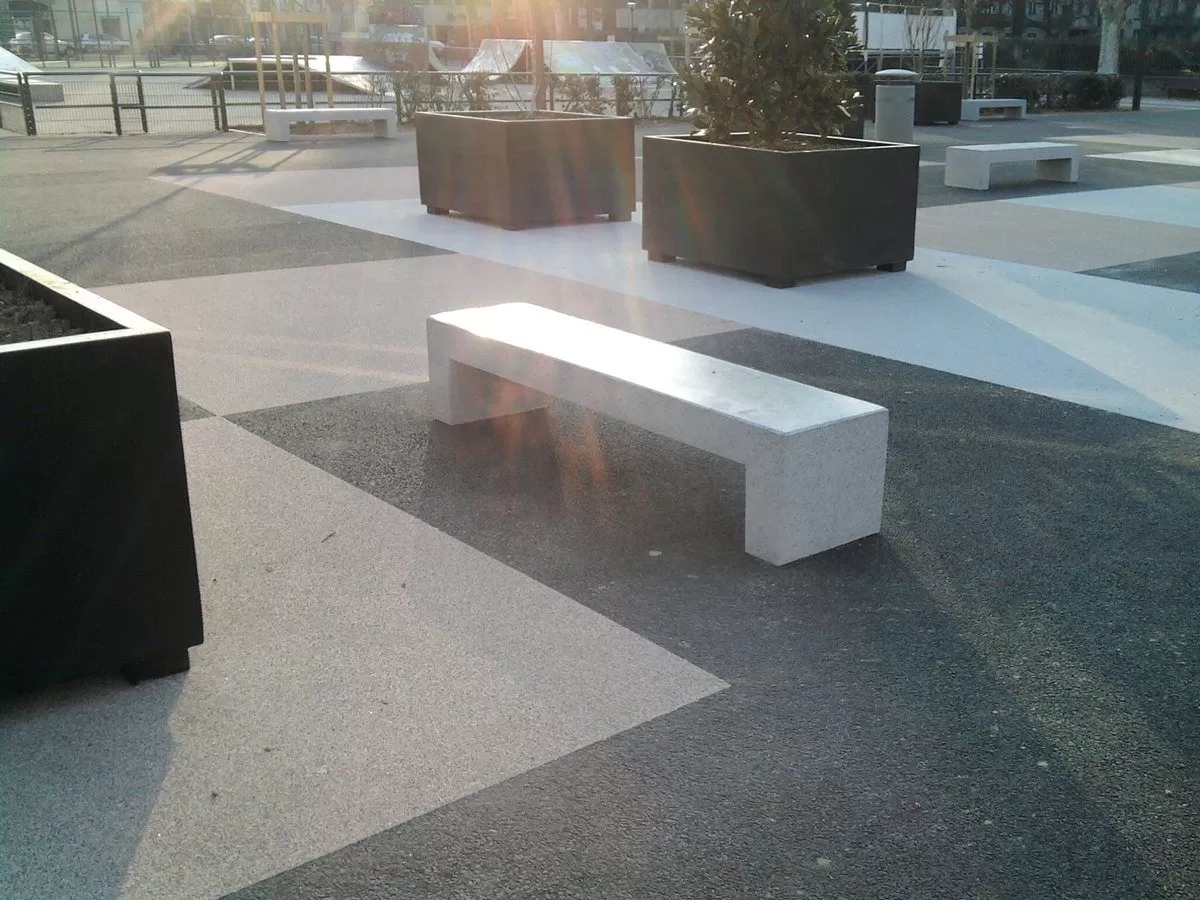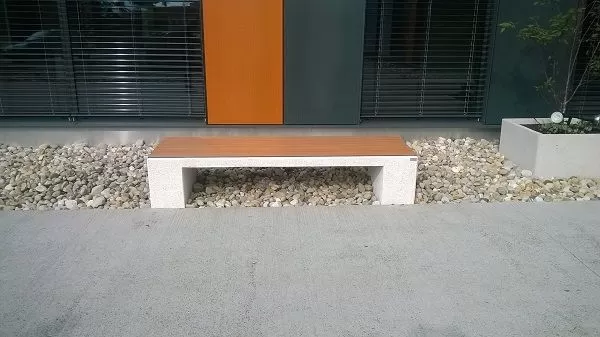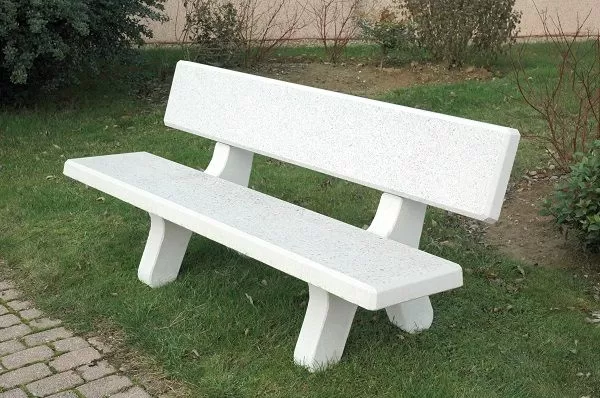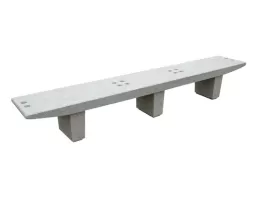Urban benches enhance a city and provide pedestrians with essential seating, enabling them to rest and interact in public spaces.Styles and materials have evolved over the decades, contemporary benches now meet a new set of expectations in terms of functionality, maintenance and design.
What is a public bench ?
Public benches are just as much a part of urban furniture as the tables, planters, litter bins and shelters scattered throughout a city. Its practical and decorative functions allow it to blend in with existing street furniture, while providing comfortable seating for one or more people. In practice, the traditional town bench can take the form of a chair, a lounger or a simple block carved from stone or formed from pre-cast concrete.
The wooden bench from the Jardin des Tuileries, an essential seat for the worldly walker, has lost the spotlight. Other materials, both more robust and more modern, are now used to create new ranges of urban benches which are more adapted to the dynamics of their time. The traditional garden bench has been transformed into a contemporary piece of furniture that can be found in a variety of forms, depending on its location.
Where are benches installed?
In terms of urban planning, benches meet a number of specific needs. The bench can be installed in parks and gardens and their immediate surroundings, as well as in the vicinity of shops and offices. Benches allow people to sit outside and chat during their lunch hour. Sometimes they are installed on interesting viewpoints: a breathtaking panorama, a lake, a monument, a fountain... Benches provide a welcome resting point for those patiently waiting for a bus, a tram or a metro train.
When should your benches be replaced ?
Street furniture is usually replaced on a case-by-case basis according to the level of wear and tear observed, and any opportunities that may arise in a given area or neighbourhood.
In some towns, old benches are given special care and well maintained. As remnants of a bygone age, they are usually preserved in their original condition in equally historic parks and gardens. But as urban development continues, cities are creating new open spaces, be they gardens, squares or playgrounds. These represent ideal locations for park benches. These can be reminiscent of the benches of yesteryear and bring new designs to the public space. Modern designs allow all kinds of layouts, optimizing the available area even in the most cramped circumstances.
Different styles of park benches
Among the most common styles of public bench are :
- benches with and without backrests
- benches
- and chairs with armrests
Sit-stand urban barriers have been highly successful, especially in dense urban areas. This low-cost format offers minimal levels of comfort, but is a welcome addition for short rests on busy streets. Sit-stand barriers are ideal around schools, on pavements and on station platforms.
Modular benches are another popular choice for street furniture. With or without backrests, the modular bench is made up of basic elements with simple lines, allowing many kinds of combinations such as arcs and curves.
Contemporary public benches are available in new shapes and materials, from the purely modern to bio-sourced materials with new shapes and sizes.
Concrete benches: a guarantee of durability
The concrete bench ticks all the boxes for replacing street furniture. Both durable and robust, concrete is particularly resistant to weathering, wear and tear and deliberate damage. Concrete benches are easy to maintain and make it easier to control maintenance and repair budgets. Recyclable and environmentally inert, this material helps support the environmental transition being driven by local authorities.








